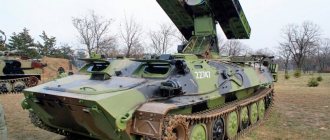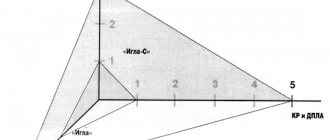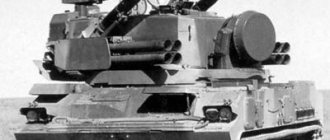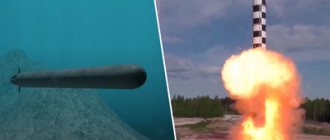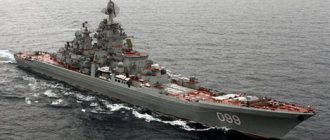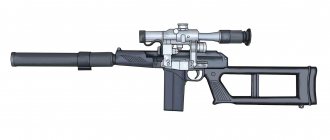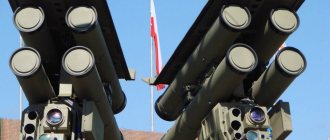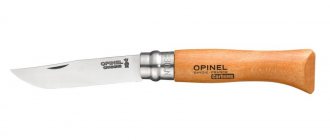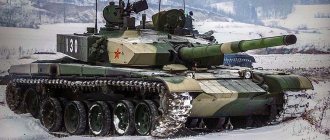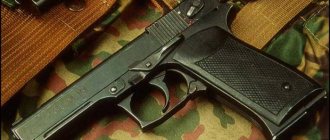The all-weather tactical short-range anti-aircraft missile system (SAM) "Tor-M2" can become unsinkable. As the head of the military air defense of the Armed Forces of the Russian Federation, Lieutenant General Alexander Leonov , told the National Defense magazine, the development of a floating version of the complex for overcoming water obstacles has already begun.
According to Leonov, the new Tor-M2 modification is being created on the basis of a platform on a specialized wheeled chassis. “The main requirement for a combat vehicle is to overcome water obstacles by swimming,” he clarified.
All-weather tactical anti-aircraft missile system "TOR-M2". Photo: RIA Novosti/Vitaly Timkiv
Content
- 1 History of creation
- 2 Design description
- 3 Composition 3.1 Combat vehicle 9A330
- 3.2 Target acquisition station (TDS)
- 3.3 Guidance station (CH)
- 3.4 SAM 9M330
- 4.1 ZK95 "Dagger"
Modifications
- ZK95 "Dagger" is a naval version equipped with a 9m330-2 missile, according to NATO classification - SA-N-9.
- 9K331 “Tor-M1” (1991) - a second target channel was installed, the area for hitting targets moving at low altitudes was increased, and it became possible to connect with the battery unified command post 9S737 Ranzhir. The equipment has changed quite a lot. The crew began to consist of three people. The detection station is equipped with a digital three-channel signal processing system, which increases protection against interference. The new amplifier adds increased sensitivity. The total number of recognized and detected targets has increased to 48.
- Based on the BM 9A331, the BM 9A331-1 was developed, and a new chassis was installed in it.
- "Tor-M1TA" - a modified 9K331 based on the wheelbase. The antenna-launching post is based on a semi-trailer, and the equipment cabin is based on a Ural-5323 vehicle.
- "Tor-M1B" - a modified towed 9K331. The equipment is based on wheeled semi-trailers.
- "Tor-M1TS" - stationary version of 9K331
- “Tor-M1-2U” is a modernization of the Tor-M1-2U, created to replace the “Tor-M1”, “Thor” and “Osa”. The first batch entered service in the Southern Military District in the fall of 2012.
- SAM "Tor-M2" - in 2008–2009, new air defense systems were created, including the promising SAM "Tor-M2". Now its production is carried out at the Izhevsk Electromechanical Plant. The effectiveness of protection against massive air raids during electronic and fire countermeasures has been increased.
- "Tor-M2E" (9K332ME) - an air defense system with a combat vehicle based on a tracked chassis. Equipped with a 9M334 anti-aircraft missile module with four 9M9331 guided missiles.
- "Tor-M2K" (9K332MK) - an air defense system with a combat vehicle based on a wheeled chassis. Development of Belarus. Equipped with a 9M334 anti-aircraft missile module with four 9M9331 guided missiles.
- “Tor-M2KM” (9K331MKM) is a modular version designed for mounting on various types of chassis. Equipped with a 9M334 anti-aircraft missile module with four 9M9331 guided missiles and a 9A331MK-1 combat autonomous module
- "Hongqi-17" is a pirated copy made in China. Manufactured on the basis of the acquired Tor-M1 complexes, after the Russian Ministry of Defense denied the PRC a license.
History of creation[edit | edit code]
Work on the creation of a divisional autonomous self-propelled air defense system "Tor" began at NIEMI in accordance with the Resolution of the CPSU Central Committee and the Council of Ministers of the USSR, dated February 4, 1975[1]. The scientific research work (R&D) on a given research topic was code-named “Tor” (order 038). I. M. Drize was appointed as the responsible executor from the parent organization. In 1975, a tactical and technical specification was issued, and in 1976, a preliminary technical design was defended. The chief designer of the Tor air defense system is V. P. Efremov. The complex was put into service on March 19, 1986[2].
Structures involved
The following structures were involved in the development and production of the Tor complexes:
- The complex as a whole - Scientific Research Electromechanical Institute, Moscow (development); [1] Machine-building plant named after M. I. Kalinin, Sverdlovsk, Sverdlovsk region. (production),[3]Mari Machine-Building Plant, Yoshkar-Ola, Mari Autonomous Soviet Socialist Republic (production);[4]
- Combat vehicle - Izhevsk Electromechanical Plant, Izhevsk, Udmurt Autonomous Soviet Socialist Republic (production);[5]
- Rocket - MKB "Fakel", Khimki, Moscow region. (development);[6]
- Onboard rocket equipment - Izhevsk Electromechanical Plant, Izhevsk, Udmurt Autonomous Soviet Socialist Republic (production);[7]
- Launcher and transport-loading vehicle - State Design Bureau of Compressor Engineering, Sverdlovsk, Sverdlovsk region. (development);[8]
- Tracked chassis - Mytishchi Machine-Building Plant, Mytishchi, Moscow region. (production);[9]
- Drives - VNII "Signal", Kovrov, Vladimir region. (development); Lyubertsy Agricultural Engineering Plant named after. A. V. Ukhtomsky, Lyubertsy, Moscow region. (production);[10]
- Near-range location systems - Scientific Research Institute of Electronic Devices, Novosibirsk, Novosibirsk region. (development);[11]
- Work on installation, configuration, testing and commissioning of stationary facilities for field testing of the complex - Construction and installation department No. 304, Kuntsevo, Moscow region. (construction).[12]
- Crawler tractor - Minsk Tractor Plant, Minsk, Belarusian SSR (development/production);[13]
Description of the design[edit | edit code]
The main mode of operation of the Tor complex is the separate operation of each battery, but there is also a mode of centralized control by the head of the division's air defense or the commander of an anti-aircraft missile regiment. The probability of hitting an aircraft-type target with one missile ranges from 30 to 77%, helicopters are hit with a probability of 50-88%, and unmanned aerial vehicles are hit with a probability of 85-95%. Provides protection against targets moving at speeds up to 700 m/s, at distances from 0.5 to 12 km and at altitudes from 10 m to 6 km. Transferring from traveling to combat position takes up to 3 minutes. The reaction time of the complex is 8-12 seconds.[14]
Performance characteristics
- Maximum horizontal range of destruction, km - 12;
- Minimum horizontal range of destruction, m: at an altitude of 10 m - 1,500, at an altitude of more than 100 m - no more than 1,000;
- Number of simultaneously processed targets, pcs. - 48;
- Number of simultaneously fired targets, pcs. - 4;
- Number of simultaneously guided missiles, pcs. - 8;
- Maximum speed of movement of targets hit, m/s - 700;
- Target maneuver overload, g. - 10;
- Ammunition for anti-aircraft guided missiles (SAM) on BM, pcs. — 8 in two ZRM;
- BM loading time, min. - 18;
- Deployment time of BM from traveling to combat position, min. - 3;
- Vehicle speed, km/h: on highways - 80, on dirt roads - 30;
- Fuel range, km (with two-hour operation of the equipment) - 500;
- Maximum weight of BM, tons - 30;
- BM calculation, pers. - 3;
- Small air target detection station (SAT):
- The approach angle of targets is invariant;
- Target detection range, km - 32;
- Target detection, pcs. — up to 45 air;
- Target tracking, pcs. — up to 45 air;
- Ranking by hazard criterion, pcs. - 10;
- Guidance station (SN):
- Number of tracked targets, pcs. - 4;
- Number of missiles simultaneously aimed at the target, pcs. - 6.
Composition[edit | edit code]
The divisional set of the Tor-M2 air defense system includes three firing batteries (a total of 12 combat vehicles).[15][ unauthorized source?
]
Combat vehicle 9A330[edit | edit code]
9A330 combat vehicle on a chassis manufactured by the Minsk Tractor Plant.
The main unit of the Tor complex is the combat vehicle. The combat vehicle includes a target detection station, a guidance station, a computer, a launcher, and other equipment (launch automation, a topographical reference and navigation system, a gas turbine power unit for autonomous power supply and a life support system). All equipment of the combat vehicle is installed on the Object 355 tracked chassis, unified with the chassis of the 2S6 ZPRK 2K22 Tunguska combat vehicle. The combat vehicle carries 8 9M330 missiles. The missiles are launched vertically, similar to the S-300 air defense system, for protection from climatic factors, as well as from the effects of bomb and shell fragments[16]. It became the first close combat system in the world to have a vertical launch.
Target detection station (SOC)[edit | edit code]
A coherent pulse all-round radar solves the problem of detecting air targets and provides their location coordinates. The station is equipped with a “friend or foe” identification system. Operates in the centimeter wavelength range with frequency control based on the beam's elevation angle. At the same time, an elevation angle can be surveyed by three beams at once, the sequence is set using a computer. Each beam has a width of 4° in elevation and 1.5° in azimuth. One beam is capable of covering a sector of 32° in elevation. In the main mode, the scanning rate of the detection zone is three seconds, while the lower part of the zone is scanned twice. Additionally, there is a three-beam viewing mode with a tempo of 1 second. Markers with the coordinates of detected targets are tied into tracks. In total, the target detection station can establish 10 tracks for 24 detected targets.[17]
Targets with velocity vectors, track numbers, degree of danger and the number of the beam in which the target is located are displayed on the combat vehicle commander's indicator. In the presence of strong passive interference, it is possible to blank the problem area of view and enter the target coordinates into the computer using manually applying a marker and manually taking coordinates. The maximum errors in determining coordinates do not exceed half the resolution of the target detection station. Resolution: no worse than 1.5-2° in azimuth, 4° in elevation and 200 meters in range. The probability of detecting an F-15 type aircraft at an altitude of 30 to 6000 meters and a range of 25-27 km is 80%. Unmanned aerial vehicles are detected at a range of 9 to 15 km with a 70% probability. Helicopters on the ground with the propellers turned on at a distance of 6-7 km can be detected with a probability of 40-70%, hovering in the air at a distance of 13-20 km - 60-80%, when jumping to a height of 20 m at a range of 12 km - not less than 60%. For timely target detection, protection against anti-radar missiles is used.[18]
Guidance station (CH)[edit | edit code]
The coherent-pulse radar is designed to detect and automatically track one target in three coordinates using the monopulse method, and guide one or two missiles to the target after launch. Operates in the centimeter wavelength range. The radar design is a small-element phased antenna array capable of forming a beam 1° wide in elevation and azimuth. The guidance station provides electronic scanning and target search with a sector of 3° in azimuth and 7° in elevation. Through a single transmitter of the antenna array, guidance commands are transmitted on board, in addition, the coordinates of the target and the missiles aimed at it are simultaneously determined. The root-mean-square error when tracking missiles does not exceed 2.5 meters, when automatically tracking fighters - no more than 7 meters in range and 30 m/s in speed. Resolution: no worse than 1° in azimuth and elevation, 100 meters in range.[19]
SAM 9M330[edit | edit code]
| 9M330 | |
| Main characteristics | |
| Purpose | Anti-aircraft guided missile |
| Developer | MKB "Fakel" |
| Curb weight, kg | 165 |
| Diameter, mm | 230 |
| Length, mm | 2890 |
| Wingspan, mm | 650 |
| Launch range max.: | |
| in the anterior hemisphere, km | 12,0 |
| Target flight speed, km/h | 2520 |
| Flight speed, | 2,11..2,41 |
| Warhead | 14.8 kg |
| Guidance | radio command |
| Fuse | radio fuse |
| Carriers | 9A330, ZK95 |
| Modifications | 9M330, 9M330-2, 9M331, 9M331-2, 9M332 |
The launch container of the combat vehicle contains 9M330 anti-aircraft guided missiles. The antenna and starting devices form a single structure, rotating about a vertical axis. The 9M330 missile defense system is made according to the “duck” design. During launch, the rockets are ejected from the launch container by an ejection device at a speed of 25 m/s, then the folding wings open. To incline the rocket to a given angle, a special gas generator is installed at the base of the aerodynamic rudder. Depending on the required rotation of the steering wheel, the gas ducts leading to the nozzles are closed. At an altitude of 16-21 m the engine is turned on and after 1.5 km the rocket picks up a speed of 700-800 m/s. At a distance of 250 meters, the command guidance mode is activated. Depending on the speed of approach to the target, for the purpose of optimal destruction, fuse delay values are transmitted from the guidance station to the missile defense board. When operating at low altitudes, it is possible to select the surface and trigger the fuse upon contact with the target itself. The rocket uses a solid rocket motor.[20]
SAM Tor-M1 – video
https://youtube.com/watch?v=qAaNA97sZJU
The electronic equipment of the 9K331 Tor-M1 anti-aircraft missile system includes: 1) a target acquisition station (TDS) with identification and antenna stabilization systems; 2) a guidance station (SN) with a phased array antenna (PAA) with one target channel, two missile channels and a missile defense acquisition coordinator channel; 3) a special computer; 4) vertical launch device for 8 missiles; 5) equipment for launch automation and pre-launch control of missiles; 6) navigation system; 7) a system for documenting the process of combat work; autonomous power supply system based on a gas turbine engine (GTE).
2) a guidance station (SN) with a phased array antenna (PAA) with one target channel, two missile channels and a missile defense acquisition coordinator channel; 3) a special computer; 4) vertical launch device for 8 missiles; 5) equipment for launch automation and pre-launch control of missiles; 6) navigation system; 7) a system for documenting the process of combat work; autonomous power supply system based on a gas turbine engine (GTE).
The Tor-M1 air defense system is capable of reconnaissance of targets on the move and opens fire from a short stop. The BM 9AZZO can simultaneously fire two missiles at one target, launched at an interval of at least 4 seconds. Protection against anti-radar missiles is ensured by their destruction in flight. After modernization in 1991, the 9K331 Tor-M1 air defense system appeared. A more powerful computer was installed on the BM 9M331, providing the ability to simultaneously fire at two targets, and the SOC included a more powerful noise protection system and a more sensitive receiver, as well as interface and communication equipment with a more modern than PU-12M mobile control point “Rangier” 9С737. After the collapse of the USSR, Tor-M1 vehicles began to be built on the basis of the GM-5955 tracked transporter of the Mytishchi Machine-Building Plant. 8 9M331 missiles are now assembled into two 9M334 missile launch modules.
SOC 9K331 "Tor-M1" provides all-round visibility and is capable of detecting aircraft at ranges of up to 27 km, and unmanned aerial vehicles - up to 15 km. The computer processes 24 targets and issues target designation to the guidance station, which, using phased array, begins to track the specified targets. When launched, the missiles are thrown vertically upward by a catapult and move in the direction of the target being fired. At an altitude of 20 m, the main engine starts. The guidance station with a rapidly scanning phased array beam simultaneously begins to accompany flying missiles from a range of 250 m.
The transmission of flight control commands to the missiles is ensured by the same phased array beam. The 9MZZO and 9M331 missiles have solid-fuel engines, high-explosive fragmentation warheads and proximity radio fuses. The "Tor" and "Tor-M1" air defense systems are in service with anti-aircraft missile regiments (tank divisions), consisting of a command post (equipped with MP22 combat control and MP25 information processing machines, 9S18 "Kupol" detection radar, P-19, "Casta- 2-2"), four batteries (4 BM 9AZZO or 9A331 and one control point PU-12M or "Ranzhir") and support units.
Modifications[edit | edit code]
ZK95 "Dagger"[edit | edit code]
Main article: Dagger (anti-aircraft missile system)
Marine version of the Tor complex with the 9M330-2 missile (according to NATO classification - SA-N-9).
9K331 "Tor-M1"[edit | edit code]
Combat vehicle 9A331-1 on a chassis produced by the Mytishchi Machine-Building Plant
Simultaneously with the adoption of the Tor complex, work began on its further modernization. Testing of the new modification, designated 9K331, began in March 1989 and ended in December of the same year. In 1991, the complex was put into service. The result of the modernization was the introduction of a second target channel, the 9M331 missile used a more effective warhead, the engagement zone for low-flying targets was increased, and it became possible to interface with the 9S737 Ranzhir unified battery command post. The probability of hitting an F-15 type target with one missile ranges from 26 to 75%, the probability of hitting ALCM cruise missiles is from 45% to 99%, and HughCobra helicopters are shot down with a probability of 50 to 98%. The affected area in the two-channel mode remained at the level of the Tor air defense system due to the reduction in reaction time to 7.4 seconds. during shooting in position and up to 9.7 s during shooting from a short stop.[21]
The equipment of the combat vehicle has undergone significant changes. The crew of the vehicle was reduced to three people (commander, operator, driver). To introduce the second target channel, a dual-processor computing system with increased performance and expanded functional control is installed. The detection station has a three-channel digital signal processing system for more effective protection against interference. A special algorithm has been implemented to protect against false tags. A new amplifier is used that provides higher sensitivity. The number of detected and recognized targets has been increased to 48. To increase the accuracy of target tracking of the guidance station, an automatic target tracking device has been added to the television-optical elevation sight. To interface with the UBKP 9S737 “Rangier”, additional radio stations and data transmission equipment were installed.[22]
The new 9M331 missiles are capable of withstanding overloads of up to 30 g and hitting targets maneuvering with overloads of up to 12 g. The missiles are placed in four-seat transport and launch containers 9YA281 instead of a launcher. TPK are made of aluminum alloys. The mass of the TPK with missile defense and ejection installations is 936 kg. Transport and launch containers can be combined into packages and transported using a 9T244 transport vehicle.[23]
On the basis of the 9A331 combat vehicle, the 9A331-1 combat vehicle was developed, in which the base GM-355 chassis was replaced by the GM-5955 chassis, produced by the Mytishchi Machine-Building Plant [edit | edit code] Unloading of the Tor-M2 air defense system at the supply depot of the US 354th Logistics Squadron, April 21, 2011, Eielson Air Force Base, Alaska. The radar was subsequently delivered to the Joint Pacific Facility in Alaska.
Modification of the 9K331 complex with placement on a wheelbase. The hardware cabin is located on the Ural-5323 vehicle, the antenna-launching post is located on the ChMZAP 8335 semi-trailer.[24]
"Tor-M1B"[edit | edit code]
Towed modification of the 9K331 complex. All equipment is placed on wheeled semi-trailers.[24]
"Tor-M1TS"[edit | edit code]
Stationary version of the 9K331 complex.[24]
"Tor-M1-2U"[edit | edit code]
The modernized Tor-M1-2U complex is designed to replace the Osa, Tor and Tor-M1 complexes. The first batch of complexes arrived in the Southern Military District in November 2012. In December 2012, a new contract worth 5.7 billion rubles was concluded with OJSC Izhevsk Electromechanical Plant Kupol. within the framework of the State Defense Order 2013. As part of the contract, by December 2013, the Russian troops should receive: 12 9A331MU combat vehicles, three 9V887M2U maintenance vehicles, one 9V887-1M2U maintenance vehicle, 9F339-1M2U spare parts vehicle, six 9T244-1 and 9T245-1 transport loading vehicles each , one set of ground equipment 9F116. In addition, the contract provides for the delivery together with a complex of control machines: one 9S931 and 9S931-1 machines, three 9S932-1 machines. Delivery date: December 2013[25][26].
9K332 "Tor-M2"[edit | edit code]
- Tor-M2 (9K332) - new detector antenna visible
- SAM Tor-M2K (9K332MK) at MAKS-2009, new chassis
- Model of the Tor-M2K air defense system at MAKS-2009, open missile silos are clearly visible
SAM "Tor-M2".
The main distinguishing feature of the complex is the ability to fire on the move without stopping - protecting equipment on the march[27]. Compared to previous versions of the air defense system, the new complex has doubled its ammunition load (up to 16 missiles), and the 9M338 missiles have an expanded kill zone and increased firing accuracy[28][29].
"Tor-M2E" (9K332ME)
- an anti-aircraft missile system with a combat vehicle on a tracked chassis. The complex's combat assets include: a 9A331ME combat vehicle, a 9M334 anti-aircraft missile module with four 9M9331 anti-aircraft guided missiles[30].
"Tor-M2K" (9K332MK)
- an anti-aircraft missile system with a combat vehicle on a wheeled chassis.
The chassis was developed by the Belarusian enterprise Minsk Wheel Tractor Plant. The complex's combat assets include: a 9A331MK combat vehicle, a 9M334 anti-aircraft missile module with eight 9M9331 anti-aircraft guided missiles controlled via four channels[31][32]. Tor-M2DT at the rehearsal of the 2020 Victory Parade in Alabino
“Tor-M2DT” (9K331MDT)
- an Arctic version of the air defense system with a combat vehicle based on the DT-30 two-link tracked transporter.
It was first presented to the general public at the Victory Parade on Red Square on May 9, 2017[33][34]. The Ministry of Defense received the first 12 serial Tor-M2DT air defense systems in November 2020. Retraining of military personnel of a separate motorized rifle brigade of the Northern Fleet on the Tor-M2DT began at the training center of the air defense forces in Yeysk in January 2019[35]. TTX
- Damage zone: by range: from 1 to 16 km[36]
- in height: from 0.01 to 10 km
]
"Tor-M2KM" (9K331MKM)
— created in a modular design for placement on various types of chassis. The complex's combat assets include: the 9A331MK-1 autonomous combat module and the 9M334 anti-aircraft missile module with four 9M9331 anti-aircraft guided missiles. At MAKS 2013 it was presented on the chassis of the Indian TATA car[40].
In 2020, tests were carried out on the use of Tor-M2KM on surface ships. The module was attached to the helipad of the ship pr 11356 “Admiral Grigorovich” and launched missile simulators; the tests were considered successful.[41]
HQ-17[edit | edit code]
Main article: HQ-17 (anti-aircraft missile system)
HQ-17 is a Chinese-made anti-aircraft missile system developed on the basis of the Russian Tor-M1 air defense system. The main difference between the Chinese version of the air defense system is the installation of a new radar and interference suppression system.
Radar P-15 and P-19
With the help of these Russian air defense systems, low-flying targets are identified. They have been in service since 1955. These radars equip artillery, radio and anti-aircraft formations, command and control posts of air defense units. The station is transported using one vehicle with a trailer. The radars deploy within ten minutes. The station operates in coherent-pulse and amplitude modes.
Radar P-15
Using the P-19 radar, reconnaissance is carried out at medium and low altitudes. The information received is then transmitted to the command post. This radar is a mobile two-coordinate radar station, for transportation of which two vehicles are used. The first is used for transporting indicator and transceiver equipment, means for protection against interference, while the second is used for the antenna-rotating device and units that provide power to the system.
In service[edit | edit code]
Current (syn.) and former (cr.) operators of the Tor air defense system Combat vehicle 9A331 Tor-M1 air defense system
- Armenia - unknown number of Tor-M2KM, as of 2019 [42]
- Azerbaijan - 8 Tor-M2E units, as of 2020 [43][ unauthorized source?
][44][45][46] - Belarus - 17 units 9K332 Tor-M2E, as of 2019[47]
- Venezuela Ground forces of Venezuela - 8 9K331 Tor-M1 complexes, as of 2012[48]. An additional 18 complexes have been ordered[48]
- Venezuelan air defense forces - 4 9K331 Tor-M1 complexes, as of 2012[49]. An additional 8 complexes have been ordered[49]
- Greek Ground Forces - 21 9K331 Tor-M1 complexes, as of 2020[50]
Military personnel of the air defense units of the Eastern Military District begin mastering the Tor-M2U air defense system
Military personnel of the air defense units of a separate tank formation of the Air Defense Forces, stationed in the Republic of Buryatia, will soon begin the practical development of the latest Tor-M2U air defense systems on the basis of a specialized center of air defense forces in Yeisk (Krasnodar Territory). As the press service of the Eastern Military District reported, during the training, the crews of the Tor-M2U air defense system will master loading launchers, searching and detecting air targets. Air defense crews of the district's tank formation will carry out the first live firing on the new military equipment at the training range in the second half of 2020.
Combat use[edit | edit code]
- On August 17, 2010, Iranian air defense systems shot down an Iranian Air Force F-4 Phantom fighter in the area of the Bushehr nuclear power plant. As the Israeli agency Debka, close to intelligence circles, reported, the plane, for unknown reasons, entered the 20-kilometer restricted zone around the nuclear power plant. The pilot and navigator managed to eject[60].
- On January 8, 2020, a Boeing 737-800 NG airline (UIA) operating international flight PS752 on the Tehran-Kyiv route crashed after taking off from Tehran. In this case, all 176 people on board died - 167 passengers and 9 crew members. A few days later, Iranian authorities said that the plane was accidentally shot down by an Iranian air defense missile system. According to the preliminary findings of the investigation, the Russian-made Tor-M1 complex was used[61][62][63].
Notes[edit | edit code]
Sources
- ↑ 12
Tikhonov, T.1, 2010, p. 220. - Davydov M.V.
, Years and People, p. 284 - Tikhonov, T.1, 2010, p. 135.
- Tikhonov, T.2, 2010, p. 131.
- Tikhonov, T.2, 2010, p. 256.
- Tikhonov, T.1, 2010, p. 68.
- Tikhonov, T.2, 2010, p. 257.
- Tikhonov, T.2, 2010, p. eleven.
- Tikhonov, T.1, 2010, p. 307.
- Tikhonov, T.2, 2010, p. 448.
- Tikhonov, T.2, 2010, p. 160.
- Tikhonov, T.2, 2010, p. 143.
- Tikhonov, T.2, 2010, p. 264.
- Vasilin, Gurinovich, 2001, p. 198.
- bmpd.
Tor-M2 anti-aircraft missile systems of the 538th anti-aircraft missile regiment at the 726th training center in Yeisk
(unspecified)
. bmpd (March 27, 2017). Retrieved May 21, 2020. - Vasilin, Gurinovich, 2001, p. 198-199.
- Vasilin, Gurinovich, 2001, p. 199-200.
- Vasilin, Gurinovich, 2001, p. 200.
- Vasilin, Gurinovich, 2001, p. 200-201.
- Vasilin, Gurinovich, 2001, p. 201-203.
- Vasilin, Gurinovich, 2001, p. 204-205.
- Vasilin, Gurinovich, 2001, p. 204-207, 210.
- Vasilin, Gurinovich, 2001, p. 206-208.
- ↑ 1234
Vasilin, Gurinovich, 2001, p. 211. - The troops of the Southern Military District received new anti-aircraft missile systems "Tor-M1-2U" (Russian). RIA Novosti (November 27, 2012). Retrieved January 22, 2013. Archived February 2, 2013.
- Information about contract No. 0173100004512001522 (Russian). 2012-12-24
. Official website of the Russian Federation for posting information about placing orders. Retrieved January 22, 2013. - The Tor-M2U air defense system was taught to shoot while moving // Rossiyskaya Gazeta
- Dmitry Sergeev.
Sniper “Thor”: why Russian anti-aircraft systems are considered a jewelry air defense system (Russian). tvzvezda.ru. Retrieved October 22, 2020. - The Russian Tor-M2 had its wings and ribs trimmed // Lenta. Ru, March 28, 2019
- Advertising booklet for the Tor-M2E air defense system // kupol.ru
- Advertising booklet for the Tor-M2K air defense system
- Year of air defense. Results of 2007 on the website "Bulletin of Air Defense"
- Rehearsal for the Victory Parade on May 9, 2020 on Red Square.
- Rehearsal of the Victory Parade on May 9, 2020 in Alabino // Zvezda TV channel
- Military personnel of the Northern Fleet will be retrained for the modern Arctic version of the Tor-M2DT anti-aircraft missile system // mil.ru, 01/17/2019
- A high-precision air defense system 'Tor-M2' has been created
- MAKS-2007 Archived copy from April 13, 2014 on the Wayback Machine // vadimvswar.narod.ru
- Anti-aircraft missile system "Tor-M2"
- Short-range air defense system "Tor-M2E" (unspecified)
(inaccessible link). Retrieved October 14, 2011. Archived March 12, 2012. - Advertising booklet for the Tor-M2KM air defense system
- [1] // RG
- RIA News.
Russian Tor air defense systems entered service with the Armenian Armed Forces (Russian).
RIA News
. RIA Novosti (December 21). - Alexander Khramchikhin Army of one war // Military-industrial courier: Newspaper. — 2020. — March 16 (No. 10 (625)). — ISSN 1729-3928
- Archived copy (unspecified)
(inaccessible link). Retrieved December 2, 2013. Archived December 5, 2013. - Alexey Nikolsky.
Russia is arming Azerbaijan
(undefined)
. Vedomosti newspaper. Retrieved June 15, 2013. - The list of military equipment that will be demonstrated by the Armed Forces of Azerbaijan at the military parade has become known (Russian) (inaccessible link). “Azeri-Press Agency (APA)” (June 12, 2013). Retrieved June 12, 2013. Archived June 12, 2013.
- The Military Balance 2020. - P. 189.
- ↑ 12
The Military Balance 2012. - P. 405. - ↑ 12
The Military Balance 2012. - P. 406. - The Military Balance 2020. - P. 104.
- The Military Balance 2020. - P. 106.
- The Military Balance 2020. - P. 326.
- The Military Balance 2020. - P. 330.
- The Military Balance 2020. - P. 242.
- The Military Balance 2020. - P. 96.
- Greece will replace the S-300 in Cyprus with the Tor-M1 air defense system and the Suzanna self-propelled guns. - War and Peace
- The Military Balance 2020. - P. 197.
- Ukraine may repair and return TOR self-propelled missile system to service – Defense Blog
- Carlo Kopp.
Kupol 9K330/9K331/9K332 Tor M/M1/M2 Self Propelled Air Defense System / SA-15 Gauntlet.
Technical Report APA-TR-2009-0705 (English). Air Power Australia
(April 2012). Retrieved June 20, 2020. - The Iranians shot down their own fighter over Bushehr, VPK.name
.
Retrieved May 8, 2020. [ unauthorized source?
] - Downed Ukrainian Boeing in Iran was mistaken for an enemy plane
- Iran admitted that it accidentally shot down a Ukrainian Boeing. Main
- Iran admitted that it shot down a Ukrainian Boeing with two missiles from the Tor-M1 air defense system (unspecified)
.
NEWSru.com
(January 21, 2020). Retrieved January 21, 2020.
Latest Russian air defense systems
The Russian military can intercept an air target at a long distance (from 200 kilometers) using the S-400 Triumph anti-aircraft missile system. This air defense system entered service in 2007. The complex was created specifically to provide protection in the event of a likely attack from both space and air. According to experts, the S-400 is capable of destroying a target at an altitude of no more than 30 thousand meters.
In 2012, a new anti-aircraft missile gun system, the Pantsir S1 air defense missile system, entered service. With the help of guided missiles and automatic cannons, for which radio command guidance, radar and infrared tracking are provided, the target is destroyed wherever it is. The air defense missile system has twelve surface-to-air missiles and two anti-aircraft guns.
The latest Russian innovation is the Sosna air defense system, which operates in a short range. According to experts, this complex is designed for fragmentation-rod and armor-piercing effects. Missiles can destroy enemy armored vehicles, ships and fortifications. The air defense system is effective in combination against high-precision weapons, drones and cruise missiles. A laser is used for guidance: the missile flies towards the beam.
Literature[edit | edit code]
- Tikhonov S.G.
Defense enterprises of the USSR and Russia: in 2 volumes. - M.: TOM, 2010. - T. 1. - 608 p. — 1000 copies. — ISBN 978-5-903603-02-2. - Tikhonov S.G.
Defense enterprises of the USSR and Russia: in 2 volumes. - M.: TOM, 2010. - T. 2. - 608 p. — 1000 copies. — ISBN 978-5-903603-03-9. - Vasilin N. Ya., Gurinovich A. L.
Self-propelled anti-aircraft missile systems // Anti-aircraft missile systems. — Reference publication. - Minsk: Belarusian Printing House, 2001. - P. 244,247. — 461 p. — 11,000 copies.
